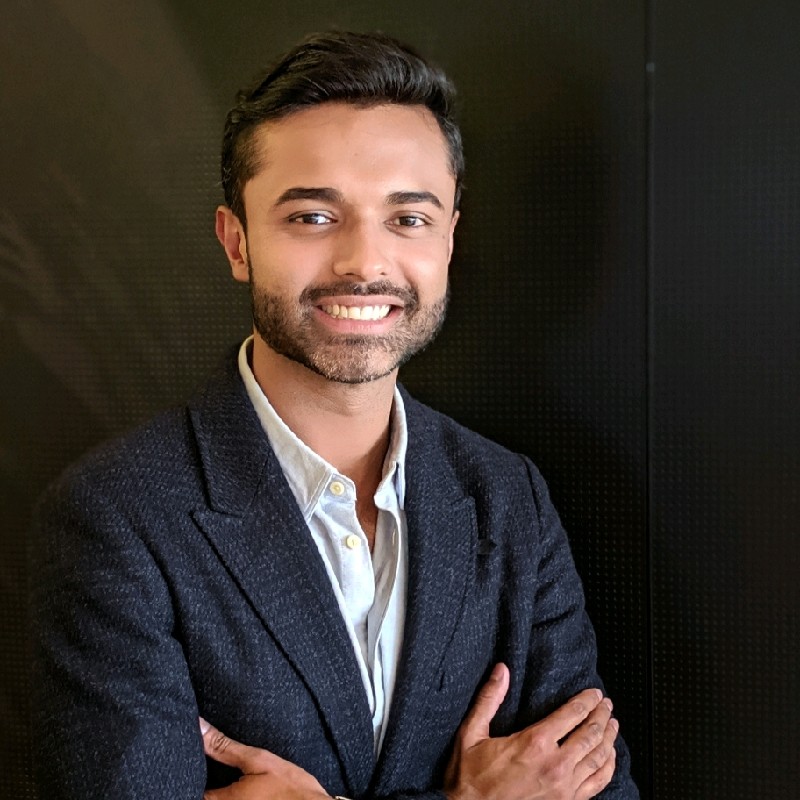Thank you for seeing James. He is a lovely 8-year-old boy, who suffers from severe asthma. He has had 4 presentations to ED over the last 12 months, including two ICU admissions. He lives with his family in Camden, regional Victoria. He is a keen dancer, although he has stopped recently because he can get quite short of breath. He is on Flixotide junior, twice daily and has been using Ventolin most nights.

I’m sitting in clinic, waiting for James and his family to arrive. While I wait, I open the electronic medical record (EMR) and see that, in the last three months while he has been waiting for an outpatient appointment, James has presented to the emergency department twice. Both times, he was discharged with a repeat three-day course of oral steroids.
Despite these ongoing episodes, there has been no change to his preventer therapy, no asthma action plan, and no documented education about triggers or how to use his reliever medication properly. I check his My Health Record (MHR) – nothing there either.
Reading the referral, I can’t help but frown with dismay. This is the definition of low value care. James is at significant risk of dying from a completely preventable cause. His asthma is grossly under-treated, he has had minimal monitoring of his disease and it’s unclear whether he even knows how to use his inhalers properly (does he use a spacer?).
‘Band aid medicine’
His care to date has been reactive – ‘band aid medicine’ – relying on repeated courses of oral steroids when his symptoms flare. This ineffective back-and-forth between his GP and repeated ED visits, is also a symptom of the wider gulf between primary and secondary care in Australia.
As a specialist, I can confidently say that 1 in 3 of the patients referred to me could be better managed in primary care with timely specialist advice.
James’ story is far from unique. There’s also the patient with what we call an ‘incidentaloma’ found on a CT chest scan, a child referred for cystic fibrosis despite normal newborn screening, who needs further workup in the community before any referral should be made. Then there’s my 18-year-old patient, Casey, whom I’ve cared for over the past 6 years. She has chronic lung disease but has been stable for many years.
I’ve tried to discharge her to the adult system for the last 18 months but haven’t found a reliable way to transition her care. Why? Because I can’t be certain that her GP is receiving my letters (since we still send them by post), and as a result, I can’t trust that her care will be safely managed in the community.
Structure of the system
The root cause of these inefficiencies lies in the structure of our healthcare system. The funding models are misaligned: Medicare funding for GPs is managed at the Commonwealth level, while state-based funding covers hospital care. This disconnect creates a disincentive for primary care providers and specialists to collaborate effectively. The communication between these two sectors is so poor that it is often easier for a GP to simply send a referral and for a specialist to book a patient into a clinic every 3 to 6 months, rather than providing real-time advice that could resolve the issue earlier.

In the traditional non-admitted, outpatient care model, patients are typically referred by primary care providers via paper, fax, email, or sometimes secure messaging, and seen face-to-face in specialist hospital or community outpatient clinics.
In this system, poor interoperability and fragmentation between primary and secondary healthcare providers create significant barriers to effective communication.
While consulting with specialists over the phone is an option, it’s not uncommon for primary care providers to spend hours playing phone tag or chasing up hospital-based medical officers who have not responded to multiple pages.
For decades, GPs have managed this challenge by maintaining a ‘little black book’ of private specialists they can call for help. However, these specialist contacts aren’t always available, particularly for newly fellowed GPs or those working in regional, rural or underserviced communities.
Doctors will often rely on the same informal network of specialist colleagues when we become unwell, but not all families have the luxury or privilege of these connections. For many, the only alternative is to go to the nearest emergency department—an option that is neither equitable nor appropriate.
Clinical Advice & Guidance
A more innovative and efficient approach to specialty care delivery is the use of Clinical Advice & GuidanceTM (A&G) or e-Consults.
In this model of care, primary care providers can initiate A&G requests before, instead of, or after referrals, using either asynchronous or synchronous messaging technology.
This form of virtual care does not require a phone or video call (although one may follow), as it is based on a written request for expert advice, followed by a response from the specialist.
While A&G is typically used between healthcare providers, there are many cases where it is entirely appropriate for patients and carers to access specialist input through these channels as well. While A&G may not be suitable for every situation, when used correctly—providing the right history and asking the right questions—it can resolve a substantial proportion of cases that would otherwise require a specialist referral. This approach makes better use of existing resources, streamlining care delivery, reducing unnecessary appointments, and ultimately improving access to specialist care.
Against the backdrop of ballooning hospital waitlists, workforce shortages, ambulance ramping, and the constant strain on our emergency departments, imagine the impact of freeing up 1 in every 3 public outpatient visits.
Paper-based systems hinder communication
There is nothing particularly new about Clinical Advice & Guidance™.
Specialists routinely provide advice—whether during on-call shifts, in consultations with colleagues, or as part of our everyday practice. The challenge with integrating this into primary care lies in outdated, paper-based legacy systems that hinder effective communication.
These systems make it easier to simply refer a patient to a hospital outpatient clinic for specialist input rather than trying to reach the right specialist.
Even when a conversation does occur, documenting the plan in the EMR often requires more effort than anticipated. In many hospitals, clinicians aren’t authorised to create a patient episode in the EMR themselves, meaning they must wait for the administrative team to do so.
By the time that happens, you’ve likely moved on with your day—or your week. Additionally, there is often uncertainty about whether the plan was actioned, as communication typically ends after the phone call—unless the patient is referred back to you again…by fax.
Low hanging fruit for healthcare
It’s an election year, and billions have already been promised for MHR improvements and urgent care clinics. However, some of the low-hanging fruit in our healthcare system—solutions that could have significant impact and at low cost—lie in enabling alternative care models like this. This approach has already been successfully embraced in various jurisdictions, particularly in the NHS, where ‘Advice & Guidance’ has been a standard practice for over a decade.
As part of the NHS Long Term Plan, there is a commitment to redesign outpatient services so that patients can avoid up to a third of face-to-face outpatient appointments over the next five years and eliminate the need for up to 30 million outpatient visits annually.
In Australia, there are exciting pockets of innovation where healthcare systems are embracing Advice & Guidance, leveraging technology to foster stronger collaboration between primary and secondary care providers. In Queensland, this model coined ‘eConsultant’ has been successfully trialled at Mater and is now supported by the Queensland Clinical Excellence Commission. This week, Alfred Health in Victoria went live with eReferrals across their tertiary hospitals with Clinical Advice & GuidanceTM in several specialties. For the past 2 years, the Sydney Children’s Hospitals Network has been leading the way, enabling their sub-specialists, spanning over 180 services, to offer A&G to general practitioners, paediatricians, and paediatric care providers not only within NSW Health but also to colleagues interstate.
Grattan Institute’s Orange Book
Fresh off the press is the Grattan Institute’s Orange Book 2025, which outlines a compelling set of recommendations to improve Australia’s healthcare system. Among them, one of the most promising is the low-hanging fruit I’ve mentioned: a focus on better supporting GPs in managing chronic diseases by ensuring they have timely access to specialist advice, ultimately preventing avoidable hospitalisations.
“One of the key recommendations is the creation of a national secondary consultation scheme to connect GPs with non-GP specialists in public hospitals. This would eliminate the need for informal networks and ensure that both specialists and GPs are properly funded for their time.”
In an ideal world, James’ case is managed seamlessly from the outset. After his first severe asthma attack, his GP sends an e-Referral with the option for Advice & Guidance to the local children’s hospital.
I receive the referral securely online, complete with relevant clinical information imported directly from the GP’s practice management software, and answers to specific respiratory questions that help me triage the case effectively.
I can quickly access James’ recent ED admission notes through the hospital’s integrated EMR, review any community imaging available in his MHR, and based on the comprehensive data at hand, make an informed decision that he can be safely and appropriately managed in the community.
I request that lung function and allergy testing be conducted locally, highlight the severity of James’ condition, and provide evidence-based recommendations to his GP to increase his preventer therapy in line with best practice guidelines.
Using AI co-pilot
My AI co-pilot helpfully takes care of the details by automatically attaching essential resources, including parent information sheets, an ASCIA-approved asthma action plan, the Australian Asthma Handbook, and videos demonstrating how to use a preventer with an inhaler for a school-aged child. Without the help of AI, I may have otherwise overlooked these resources, which are essential for ensuring treatment adherence and prevention of future exacerbations.
Once everything is in place, I press send, and the Clinical Advice & Guidance™ lands in his GP’s inbox for review. The additional patient resources are securely delivered to James’ family, a copy of the asthma action plan is sent to his school, and both the A&G and the original e-Referral are automatically uploaded to his MHR, ensuring continuity of care.
All of this takes just a few minutes, freeing up a spot in my clinic for a complex case of a newly diagnosed patient with interstitial lung disease, someone who needs to see me urgently.
This is not a distant utopian future—it’s entirely plausible right now.
The wicked problems of healthcare that we’ve faced for generations are now within our grasp to solve, thanks to the technology at our disposal.
By embracing these alternative models of care, enabled by technology, we can rapidly transform care delivery, in ways that will immediately benefit our patients.
If we choose to do nothing, we will continue to let patients like James fall through the cracks, leaving them in a system that doesn’t meet their needs or deliver the value that they deserve.
A/Professor Vikram Palit is CEO of Consultmed, a Paediatric Respiratory Physician, and Senior Academic in Health Systems at UNSW Medicine & Health.

Have your say by answering our poll question:





Providing timely, relevant, and actionable guidance to both patient and referring clinician, at the point of referral isn’t just a convenience—it’s an ethical responsibility.
In pediatrics, early intervention is everything. Yet too often, I know families wait months—or years— to secure that consultation with a service provider simply to confirm reasonable next steps.
The clinical Advice and Guidance approach changes that. It ensures that referrals don’t just move through a system—they come with specialist-backed guidance that empowers both clinicians and families to act now.
We can’t keep relying on outdated, fragmented communication. If we want a healthcare system that truly works, we must value access to knowledge as much as access to care.
This is the future we should be building.
“it’s not uncommon for primary care providers to spend hours playing phone tag or chasing up hospital-based medical officers who have not responded to multiple pages.”
As a GP, this hits right to the heart. I want to help my patients but how can I when I’m stuck with such inefficient systems and have other patients waiting to see me? Advice and Guidance systems would be a game changer- hospitals already have innovative programs to minimise inpatient bed days- why are we not doing the same for outpatient wait times?
Back in the good old days, a quick phone call between colleagues, often trusted friends, was all it took to share an image, brainstorm a solution, and offer a patient the benefit of combined expertise. This ‘corridor consult,’ built on inherent trust, provided swift guidance and reassurance. But the rise of accountability and liability has eroded this vital exchange. Now, patients face delays and unnecessary travel, losing the immediacy of expert advice. Even telemedicine, while helpful, requires appointments after the referral processes.
In my world of paediatric surgery and urology, the impact is profound. Parents / caregivers, already anxious, must endure agonising waits for scan reviews or simple reassurance, their lives put on hold. This vulnerability underscores the need for rapid access to expert opinion.
The Advice & Guidance model restores a crucial element of care: timely, trustworthy consultations that empower family doctors and alleviate patient anxiety, effectively bringing back the essential ‘corridor consult’ in a modern, secure format. It’s about bringing back that quick, trusted advice that makes a world of difference.